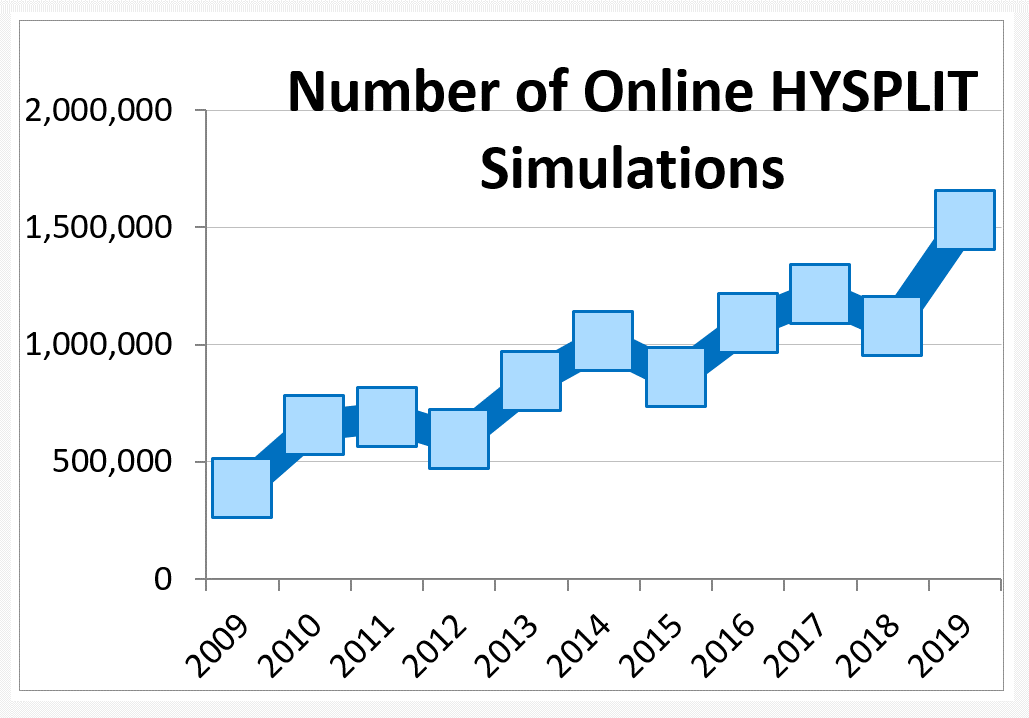HYSPLIT Model Produces Record Setting 1.5 Million Simulations in 2019
January 2020
January 2020

Credit: NOAA
ARL’s HYSPLIT model produced a record 1,538,998 simulations on its publicly accessible Real-time Environmental Applications and Display sYstem (READY) web server in 2019. This figure marks a nearly 42 percent increase in the last year and far surpasses the previous record of 1,217,438 simulations produced in 2017. HYSPLIT is one of the world’s most widely used models for atmospheric trajectory and dispersion calculations, and its user base continues to grow thanks, in part, to ARL’s yearly training workshops.
NOAA’s National Weather Service (NWS) and its 120+ local Weather Forecast Offices are the primary day-to-day operational users of HYSPLIT, and NWS’s National Centers for Environmental Prediction runs HYSPLIT per international agreements related to nuclear treaties. NWS users ran HYSPLIT 3,471 times in 2019 (an 11 percent increase over 2018), including in support of 821 real events, but those simulations are performed on dedicated operational servers so they’re not included in the record setting figure. HYSPLIT simulations are created in response to industrial and transportation incidents involving the release of hazardous materials, wildfires and other burn events, and unspecified special events (forecasters often run preparatory scenarios for major public events such as New Year’s Eve in Times Square, the Rose Bowl Parade, and the Little League World Series, just to name a few).
About HYSPLIT: HYSPLIT was developed by NOAA’s Air Resources Laboratory to simulate how, where, and when pollutants are transported, dispersed, and deposited based on applied meteorological conditions. It has been used operationally for over a decade and is continually improved as research advances.
About READY: READY enables users worldwide to access and display meteorological data and create trajectory and dispersion model products. For more information, please visit https://www.ready.noaa.gov.